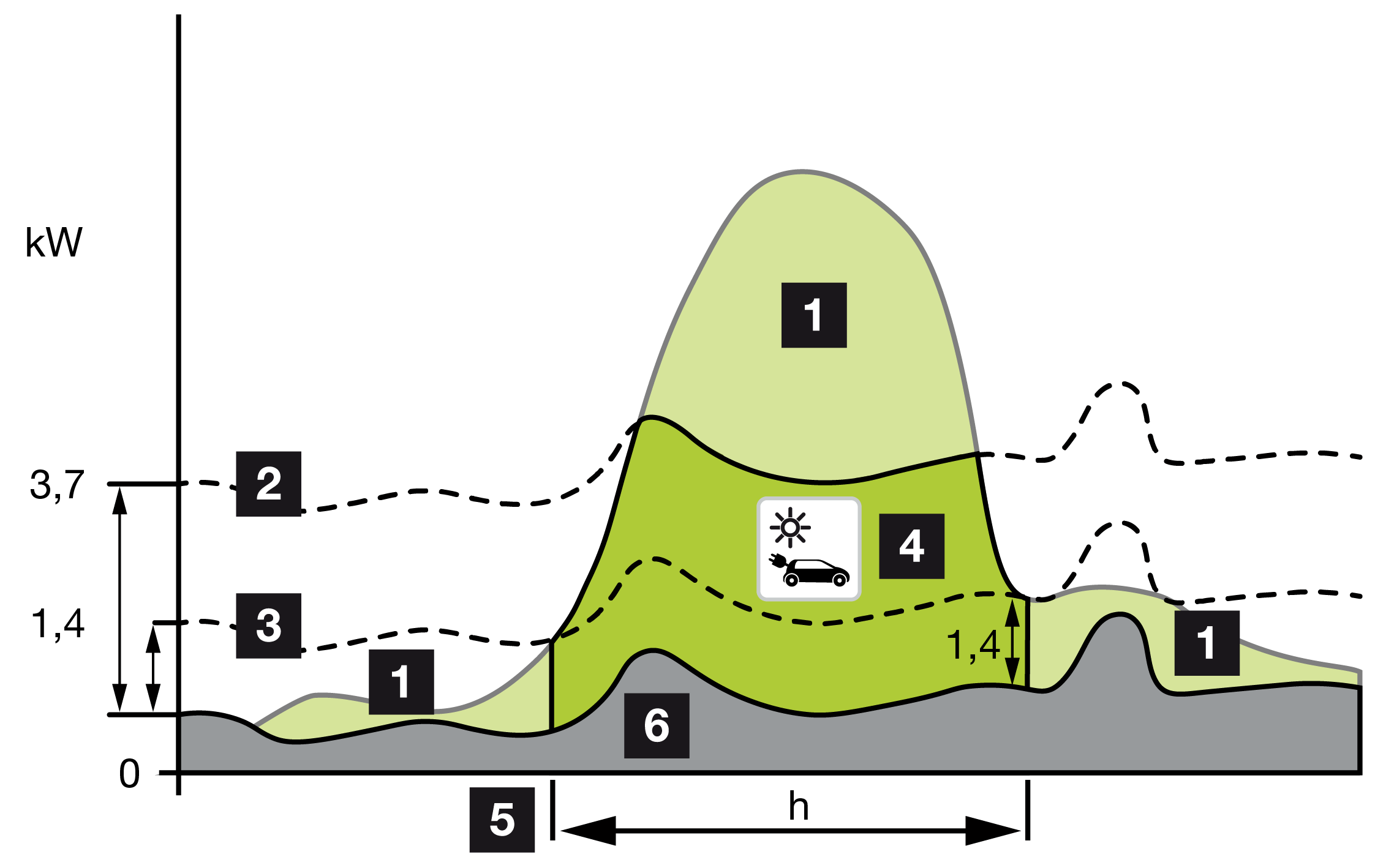Solar Pure Mode (solar charging)
Solar charging is only possible in combination with a PV system and the KOSTAL Smart Energy Meter. The PV system supplies the power needed to charge the electric vehicle. With this function, the electric vehicle is only charged using the PV surplus. If there is a battery in the house network, this can also be used to charge the electric vehicle.
For electric vehicles that are charged 1-phase, the charging power is between 1.4 and 3.7 kW. This means that charging is only started when at least 1.4 kW of surplus PV energy is available and is interrupted or terminated when this falls below 1.4 kW.

For electric vehicles that are charged 3-phase, the charging power is between 4.1 and 11 kW. This means that charging is only started when at least 4.1 kW of surplus PV energy is available and is interrupted or terminated when this falls below 4.1 kW.
1 | PV surplus |
2 | Max. wallbox charging power 3.7 kW (with 1-phase vehicle) Max. wallbox charging power 11 kW (with 3-phase vehicle) |
3 | Min. wallbox charging power 1.4 kW (with 1-phase vehicle) Min. wallbox charging power 4.1 kW (with 3-phase vehicle) |
4 | Charging electric vehicle with PV surplus |
5 | Electric vehicle charging time |
6 | Home consumption of other devices - partly covered directly from PV. |
Usage of house battery
If there is a battery in the house network, this will also be used to charge the electric vehicle as standard.
Use house battery: In this case, the house battery is also used to charge the electric vehicle and the charging process is not interrupted, even if there is too little PV energy available. Should this happen, the charging power is reduced to a minimum. Charging is only stopped if the battery is flat or if the discharge power is no longer sufficient to charge the vehicle.
Do not use house battery: In this case, the house battery is prevented from being used to charge the electric vehicle. The battery is only used for periods with cloud hysteresis/hysteresis for drawing power. The aim is to prevent the charging process from starting and stopping frequently to preserve the electric vehicle's battery.
INFO

Clouds/hysteresis for drawing power
If the necessary excess power is not available, charging is maintained for approx. 5 minutes at the minimum charging power to avoid unnecessary switching on and off. After the hysteresis time has elapsed, charging is interrupted and only resumed after a wait time of approx. 8 minutes.